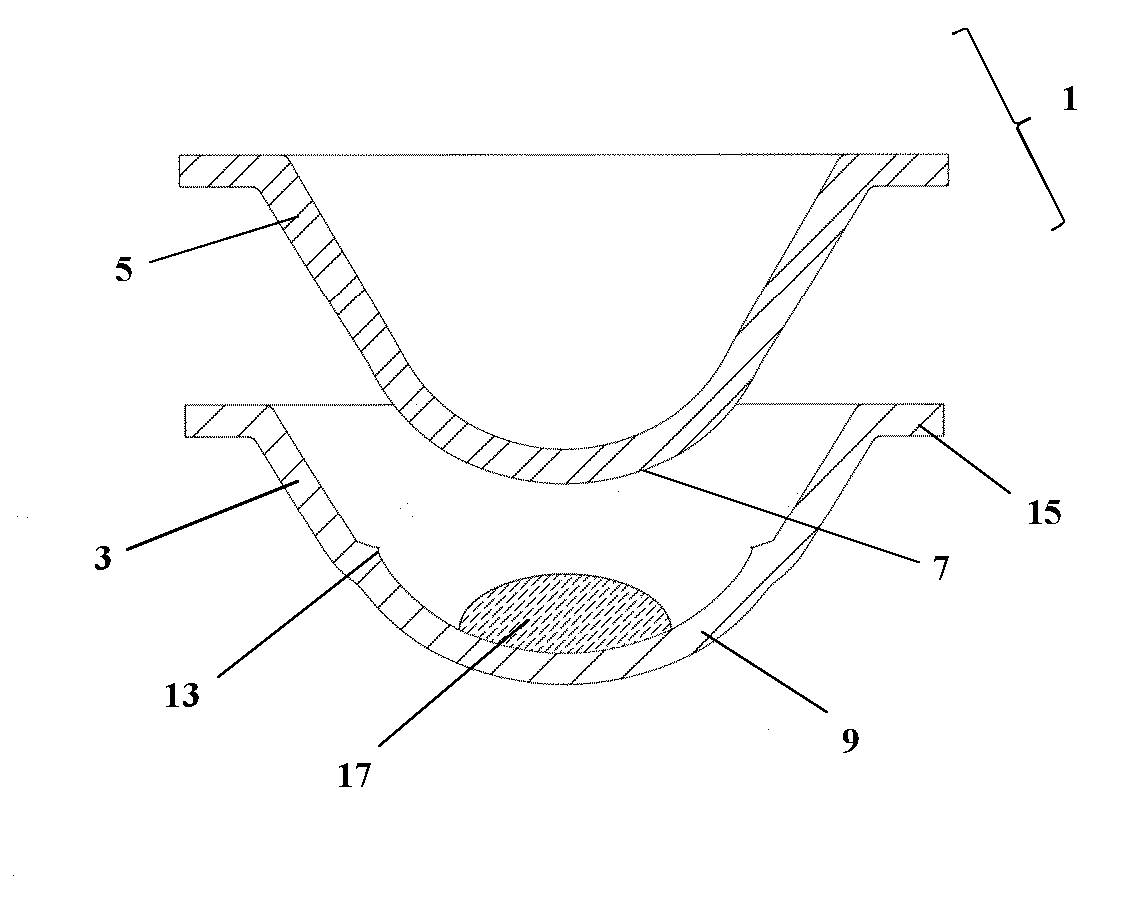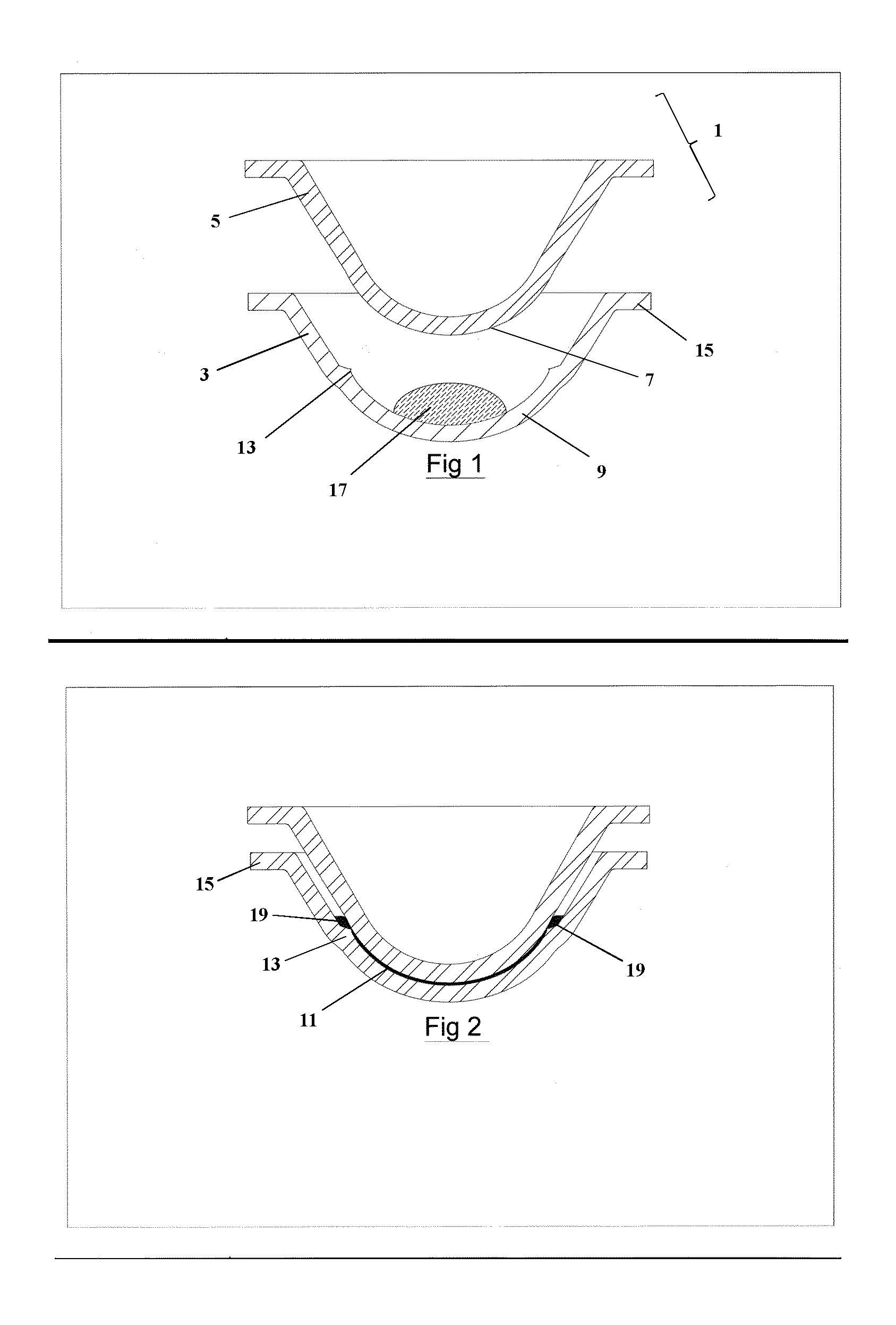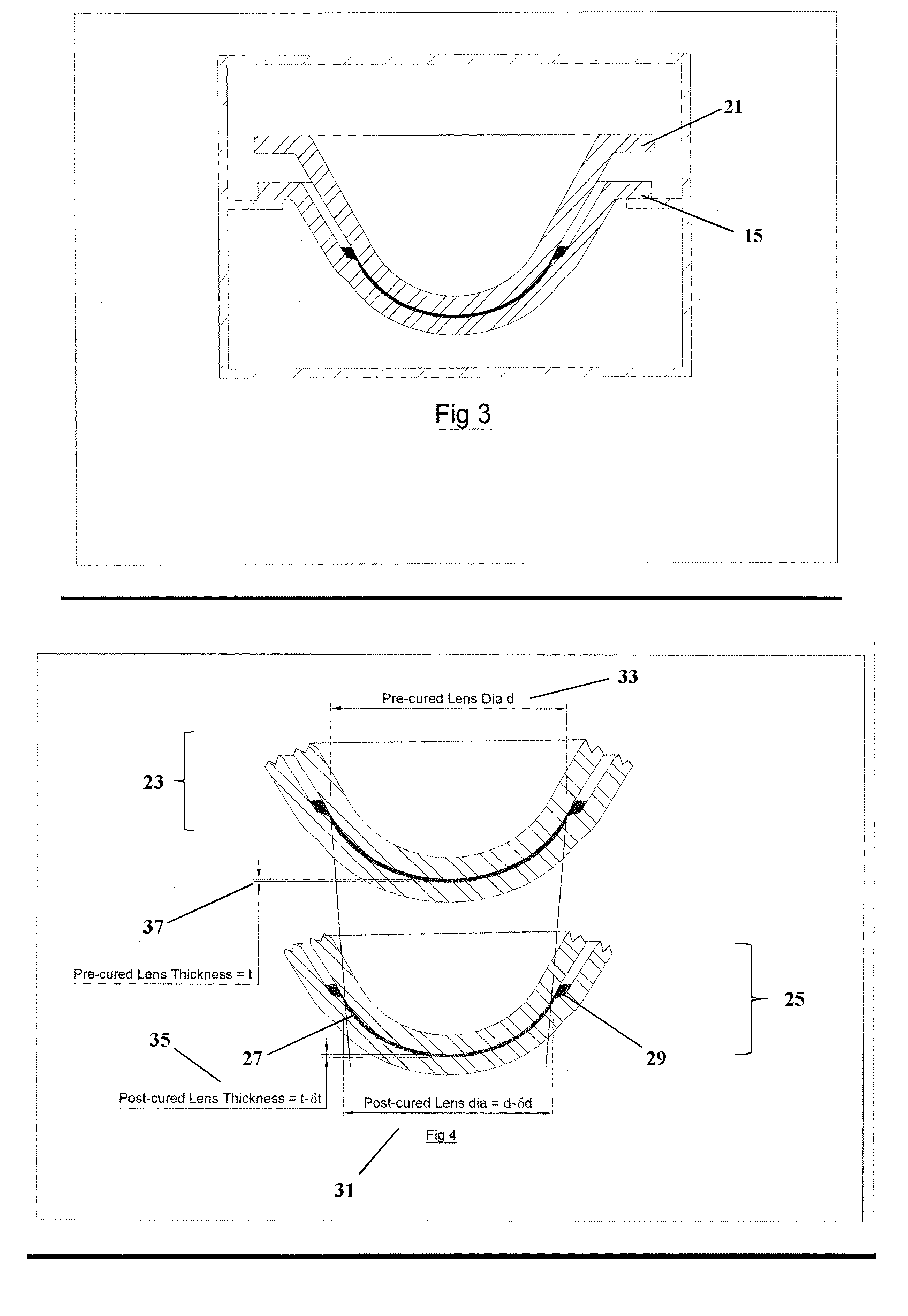Contact lens manufacturing method
a manufacturing method and contact lens technology, applied in the field of contact lens, contact lens manufacturing and contact lens packaging, can solve the problems of user discomfort, inconvenient cutting, and high cost of vial packaging, and achieve the effects of enhancing the efficiency in the use of procedures and materials, efficient manufacturing process, and efficient manufacturing and distribution
- Summary
- Abstract
- Description
- Claims
- Application Information
AI Technical Summary
Benefits of technology
Problems solved by technology
Method used
Image
Examples
example
Example 1
[0120]A pre-hydrated contact lens is formed using the method of the present invention by disposing a quantity of lens-forming composition (comprising hydroxyethyl methacrylate and vinyl pyrrolidone) in a lens-forming cavity formed between male and female mould halves (of polypropylene) of the invention, in accordance with FIG. 1, and thermally curing the composition. The diameters of the pre-cure mould cavity, post-cure mould cavity and dry lens formed were recorded and are presented in Table 1.
TABLE 1Pre-cure mouldPost-cure mouldcavity diameter / cavity diameter / Pre-hydrated lensMoulding No.mmmmdiameter / mm110.587910.551810.553210.595410.49610.517310.565810.522210.527410.584610.54910.549510.586410.507810.54610.562610.4910.53Mean10.580510.519510.5360STDEV0.01320.02640.0138
[0121]The mean change in diameter of mould cavity is a 60 μm reduction, which is a 0.58% contraction on a 10.58 mm aperture. This resulted in approximately 10% volume reduction.
[0122]The free and flexible mou...
example 2
[0123]As discussed above, a particular characterization of the manufacturing method, the female mould half 3 and the blister 59 of the present invention is the flexibility of at least the female mould half to lateral flexibility or radial extension. It is preferable that at least the female mould half it is sufficiently flexible that a return may be configured in the optical surface of the female mould half, associated with the annular ridge, whilst enabling the cured pre-hydrated lens to be released.
[0124]The following sets out the deformation under varying loads for a female mould half formed according to a preferred embodiment of the present invention.
[0125]A female mould half according to a preferred embodiment was placed between fixed and moving platens. Force was therefore applied equally in one direction against the narrow collar 15 of the mould half 3 and in the other direction against the external surface of the domed optical zone 43 of the mould half 3.
[0126]When compressi...
PUM
| Property | Measurement | Unit |
|---|---|---|
| diameter | aaaaa | aaaaa |
| force | aaaaa | aaaaa |
| diameter | aaaaa | aaaaa |
Abstract
Description
Claims
Application Information
 Login to View More
Login to View More - R&D
- Intellectual Property
- Life Sciences
- Materials
- Tech Scout
- Unparalleled Data Quality
- Higher Quality Content
- 60% Fewer Hallucinations
Browse by: Latest US Patents, China's latest patents, Technical Efficacy Thesaurus, Application Domain, Technology Topic, Popular Technical Reports.
© 2025 PatSnap. All rights reserved.Legal|Privacy policy|Modern Slavery Act Transparency Statement|Sitemap|About US| Contact US: help@patsnap.com



